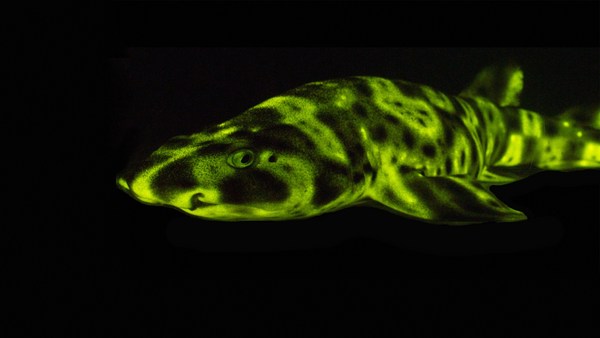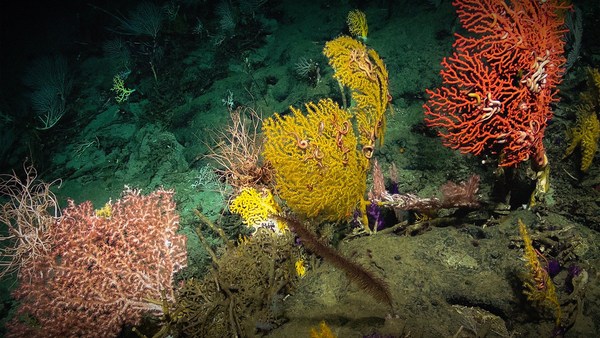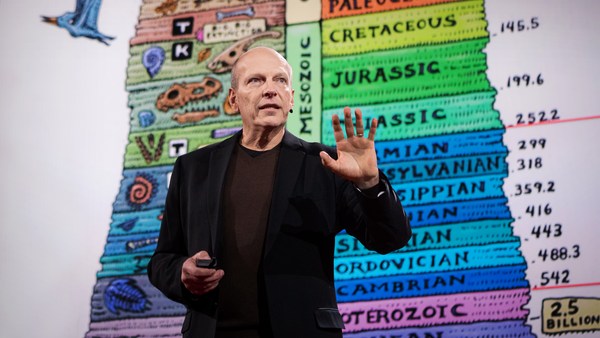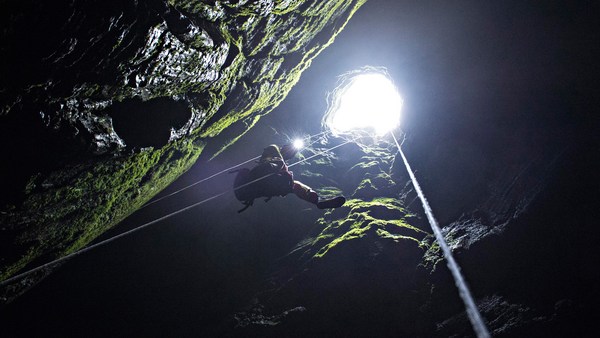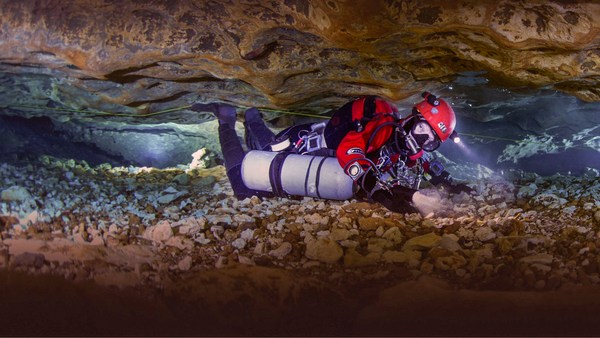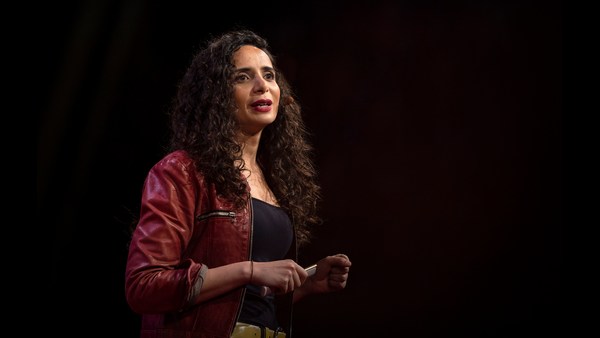Ichthyology, the study of fishes. It looks like a big, boring word, but it's actually quite exciting, because ichthyology is the only "ology" with "YOLO" in it.
(Laughter)
Now, to the cool kids in the audience, you already know, YOLO stands for "you only live once," and because I only have one life, I'm going to spend it doing what I always dreamt of doing: seeing the hidden wonders of the world and discovering new species. And that's what I get to do.
Now, in recent years, I really focused on caves for finding new species. And it turns out, there's lots of new cavefish species out there. You just have to know where to look, and to maybe be a little thin.
(Laughter)
Now, cavefishes can tell me a lot about biology and geology. They can tell me how the landmasses around them have changed and moved by being stuck in these little holes, and they can tell me about the evolution of sight, by being blind.
Now, fish have eyes that are essentially the same as ours. All vertebrates do, and each time a fish species starts to adapt to this dark, cold, cave environment, over many, many generations, they lose their eyes and their eyesight until the end up like an eyeless cavefish like this one here. Now, each cavefish species has evolved in a slightly different way, and each one has a unique geological and biological story to tell us, and that's why it's so exciting when we find a new species.
So this is a new species we described, from southern Indiana. We named it Amblyopsis hoosieri, the Hoosier cavefish.
(Laughter)
Its closest relatives are cavefishes in Kentucky, in the Mammoth Cave system. And they start to diverge when the Ohio River split them a few million years ago. And in that time they developed these subtle differences in the genetic architecture behind their blindness. There's this gene called rhodopsin that's super-critical for sight. We have it, and these species have it too, except one species has lost all function in that gene, and the other one maintains it. So this sets up this beautiful natural experiment where we can look at the genes behind our vision, and at the very roots of how we can see.
But the genes in these cavefishes can also tell us about deep geological time, maybe no more so than in this species here. This is a new species we described from Madagascar that we named Typhleotris mararybe. That means "big sickness" in Malagasy, for how sick we got trying to collect this species. Now, believe it or not, swimming around sinkholes full of dead things and cave full of bat poop isn't the smartest thing you could be doing with your life, but YOLO.
(Laughter)
Now, I love this species despite the fact that it tried to kill us, and that's because this species in Madagascar, its closest relatives are 6,000 kilometers away, cavefishes in Australia. Now, there's no way a three-inch-long freshwater cavefish can swim across the Indian Ocean, so what we found when we compared the DNA of these species is that they've been separated for more than 100 million years, or about the time that the southern continents were last together. So in fact, these species didn't move at all. It's the continents that moved them. And so they give us, through their DNA, this precise model and measure of how to date and time these ancient geological events.
Now, this species here is so new I'm not even allowed to tell you its name yet, but I can tell you it's a new species from Mexico, and it's probably already extinct. It's probably extinct because the only known cave system it's from was destroyed when a dam was built nearby. Unfortunately for cavefishes, their groundwater habitat is also our main source of drinking water.
Now, we actually don't know this species' closest relative, yet. It doesn't appear to be anything else in Mexico, so maybe it's something in Cuba, or Florida, or India. But whatever it is, it might tell us something new about the geology of the Caribbean, or the biology of how to better diagnose certain types of blindness. But I hope we discover this species before it goes extinct too.
And I'm going to spend my one life as an ichthyologist trying to discover and save these humble little blind cavefishes that can tell us so much about the geology of the planet and the biology of how we see.
Thank you.
(Applause)
